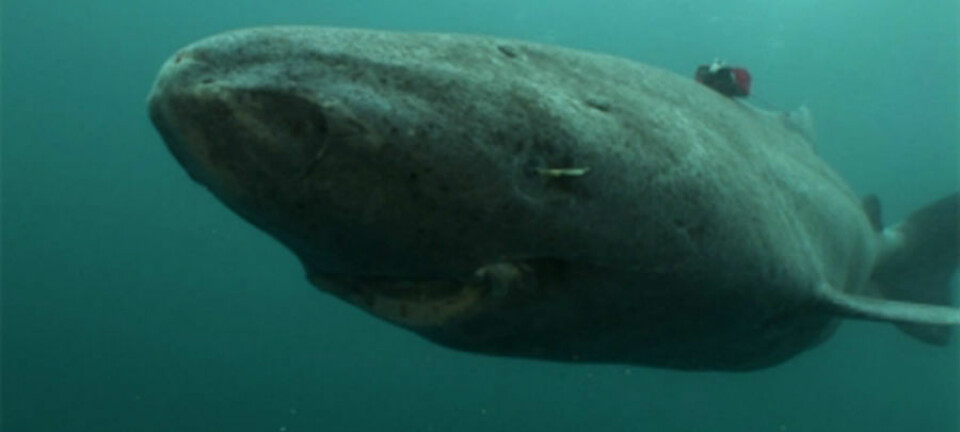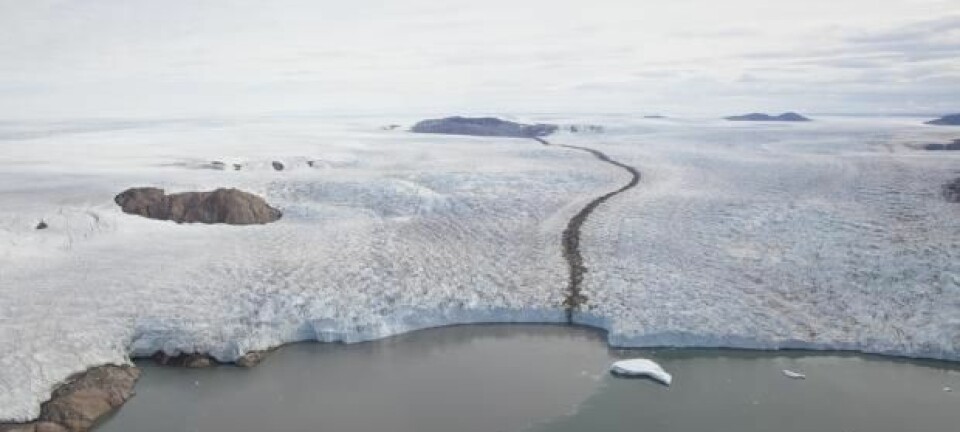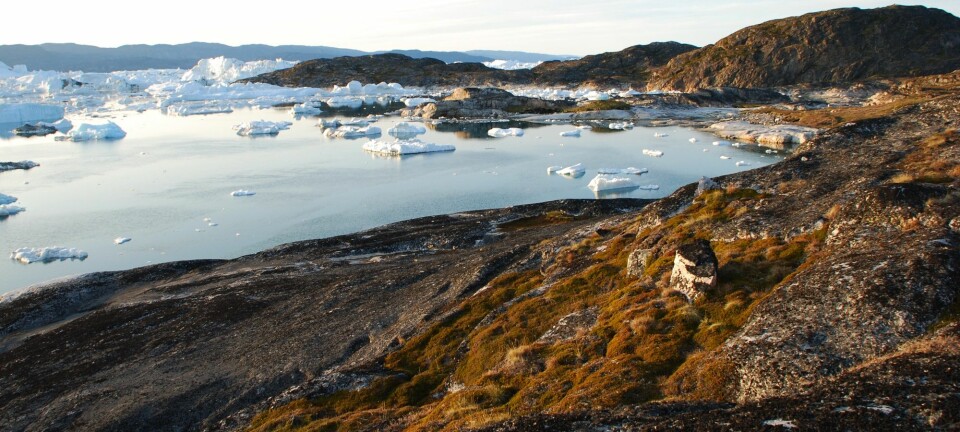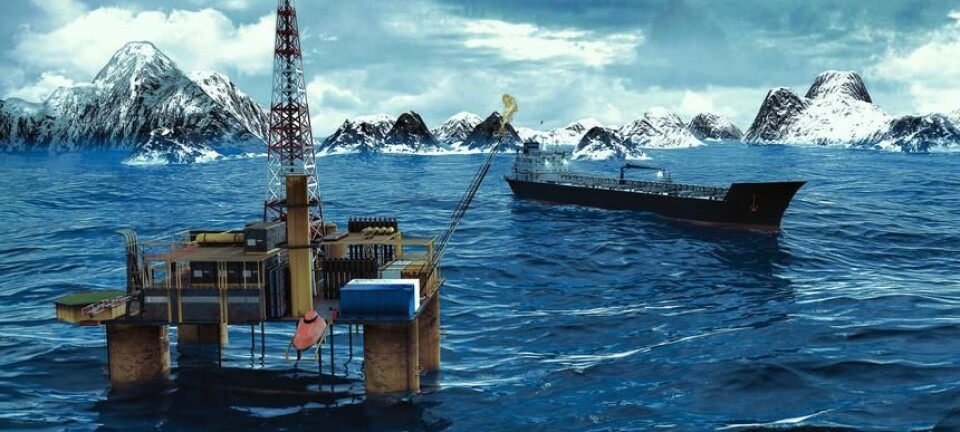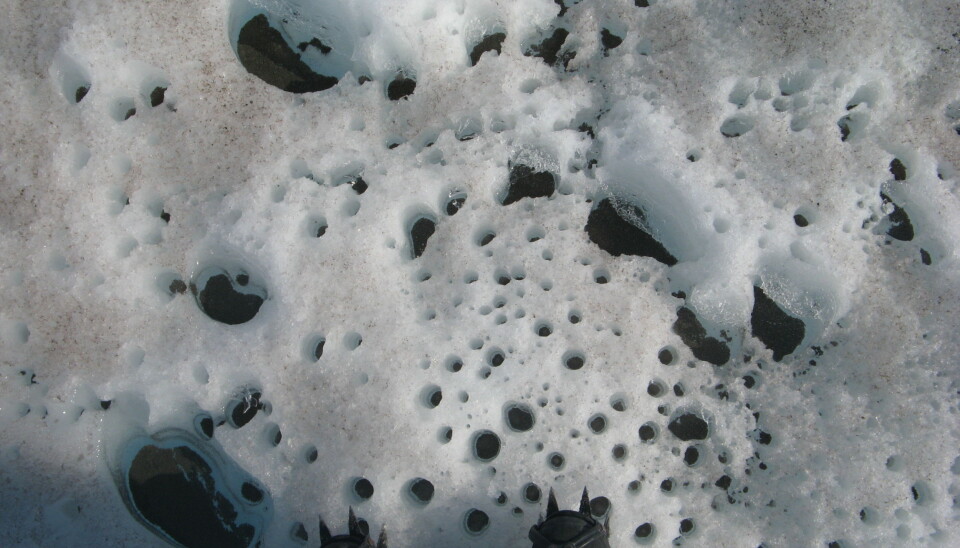
Industrial pollutants are changing the microbiota of the Greenland ice
Bacteria within the Greenland ice sheet are adapting to cope with pollutants deposited in the ice. These same bacteria may be key to removing some of this contamination before it enters the local food chain.
A new study suggests that bacteria found at the surface of the Greenland ice sheet show signs of genetic adaptations that allow them to withstand the pollution carried through the air from industrialised regions outside of the Arctic.
Once in Greenland, these pollutants enter the local food web once the ice melts.
“For a long time these isolated remote regions of the Arctic have been perceived as very clean environments. But we now realise that pollution is transported around the globe and the source is not local,” says lead-author Aviaja Hauptmann from Ilisimatusarfik, University of Greenland in Nuuk.
The bacteria identified in the new study could be used as both an indicator for tracing contamination in local food webs, and perhaps even as a tool to break these contaminants down into less harmful forms before they are ingested by local animals and people.
Microbial hotspots adapted to pollution
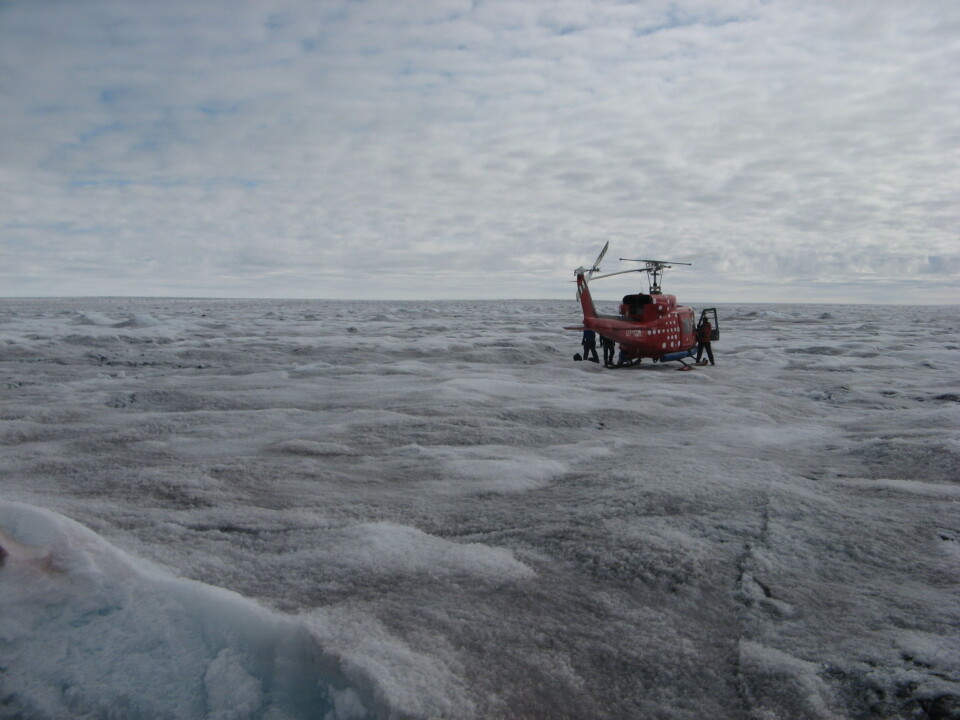
Hauptmann analysed pockets of windblown debris that collect on the surface of the ice sheet, known as cryoconite. These pockets of rock particles and soot are hotspots for microbial activity.
“We were curious to see what type of microbes are in there. We know that contaminants are deposited and frozen in the ice, so we wanted to see if the microbes there have the ability to degrade or resist some of these specific compounds,” she says.
Hauptmann and colleagues took 34 samples from five locations around the ice sheet in Greenland and extracted all of the DNA in a process known as metagenomics.
Genetic analysis reveals pollution induced changes
The bacteria contained certain genetic markers that suggest they are able to break down harmful compounds, including polychlorinated biphenyls (PCBs) and polycyclic aromatic hydrocarbons (PAHs). (See Fact Box.)
“We didn’t measure contaminants in the ice or assess whether the microbes are actually breaking down the contaminants. We just looked to see if they [the microbes] have the ability to break down these contaminants—and we saw that they do,” she says.
DNA analyses also suggested that the bacteria have developed a resistance to certain toxic heavy metals: lead and mercury.
“[The bacteria don’t break these heavy metals down] but they are resistant to their harmful effects, so they can survive in an environment that has certain concentrations of these heavy metals,” says Hauptmann.
Collectively these results show that—even from a microbiological perspective—the Greenland ice sheet “cannot be seen as a pristine environment,” she says.
Tracer for food contamination
Hauptmann’s wider concern is that these pollutants can be released as the ice sheet melts and transported to ice-free areas of Greenland where they might be consumed by animals and ultimately contaminate local food grown in Greenland.
“I’m from Greenland myself, and I know that it’s something that concerns people. We know there’s a problem but what do you tell a population where there’s no access to fresh vegetables for most of the year? That they can’t hunt their local food [because it might be contaminated]? That’s just raising the issue without trying to solve it,” she says.
But Hauptmann hopes that the new study is the first step towards being able to trace contamination through the ecosystem by identifying these pollution-adapted bacteria. And eventually, these same bacteria may even be used as a tool to break the compounds down into less harmful forms.
“Degradation turns [compounds] into something else, mostly smaller compounds. In some cases these smaller compounds could be less toxic, and if we can identify which microbes do this then we could use it as a biotechnological tool to clean up some of these contaminants,” says Hauptmann, and adds “of course this requires lots more research before we get there.”
Arctic Council to investigate influence of climate change on pollution
The Arctic Monitoring and Assessment Programme, one of six working groups of the Arctic Council, recently published a report that identified PAHs and PCBs as just two in a long list of chemical groups classed as being an “emerging concern in the Arctic.”
“These forthcoming ecological changes are uncertain and need to be understood to properly interpret future contaminant data and provide reliable information to policy-makers,” write the authors of the report.
Later this year, the group is due to publish another report on how climate change may remobilise contaminants that have been building up in the Arctic in recent decades and their biological effects on local fauna and communities.
One of their priorities is now to monitor, assess, and communicate the potential health hazards of these chemicals, which Hauptmann’s research suggests are present across the sites she studied in Greenland.
